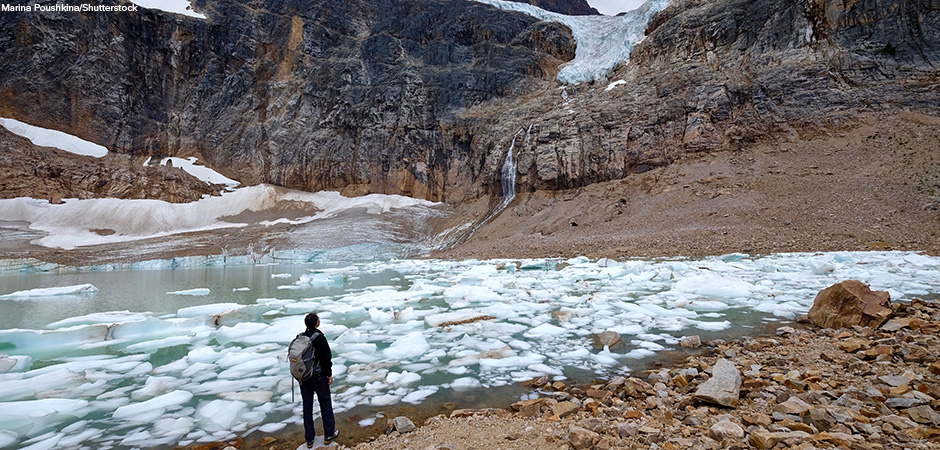
Have you ever noticed that most geographical locations are named after men? While the number of men and women are relatively equal, there are fewer geographical locations named after women. When you eliminate the categories of Christian saints, Greek goddesses, and queens, even fewer landmarks are named to honor women. A lack of women-inspired place names is especially true for Indigenous women and women of color. The United States’ northern neighbor, Canada, recently cast a light on this issue by showcasing the women who are honored with place names.
The Geographical Names Board of Canada approves place names. Since its founding in 1897 through the mid-1960s, the board was made up of men only. Records reveal those explorers, land surveyors, and geologists often proposed place names for approval and proposed naming them after men. Because place names have a major role in recognizing, preserving, celebrating, and strengthening history and culture, Canada is now trying to highlight those women who have places named after them.
On International Women’s Day in 2021, the Canadian Ministry of Natural Resources made public a specially developed interactive map. The first national map of its kind, it details nearly 500 geographical locations named after women. One can use the government resource to learn about the stories of a variety of women who contributed to Canada’s rich history. Here, btw highlights five Canadian women who have mountains named after them.
Caubvick (Qavvik) – Mount Caubvick, Newfoundland and Labrador (1652 m, 5420 ft)
The tallest North American mountain east of the Rockies is named after Caubvick (also known as Qavvik), an eighteenth-century Inuk, or indigenous, woman. In 1772 Caubvick and four other indigenous people journeyed to England and Ireland with English entrepreneur George Cartwright. Sadly, the Inuk caught smallpox during the tour of Europe. Caubvick was the only survivor.
Emily Howard Jennings Stowe – Mount Howard-Stowe, British Columbia (2315 m, 7595 ft)
Emily Howard Jennings Stowe was a barrier breaker for many women. In 1867, after attending medical school in the United States, Stowe was the first woman physician to publicly practice medicine in Ontario. Despite being denied an official medical license because she was a woman, Stowe specialized her practice to treat women and children. She was finally granted her medical license in 1880. Stowe was also a suffragist, meaning she advocated for women’s right to vote. She believed strongly that women deserved the opportunity to earn the same credentials as men in any profession. Because of this, she founded the Canadian Women’s Suffrage Association in 1883. She also helped create the nationwide organization for suffrage called the Dominion Women’s Enfranchisement Association. She worked to influence political change through lobbying, petitions, rallies, speeches, and editorials.
Françoise-Marie de Saint-Étienne de La Tour – Mount Marie, New Brunswick (661 m, 2168 ft)
Françoise-Marie de Saint-Étienne de La Tour was a heroine celebrated for her bravery and strength during a civil war in Acadia. In 1640 she married Charles de Saint-Étienne de La Tour, one of two claimants to the colony’s governorship. She traveled to France, England, and Boston, Massachusetts, to gather supplies and recruit men to fight for her husband. In 1645, when her husband was away, Fort La Tour was attacked, and she took full command. With only 45 men, she held off the 200 attackers for three days before surrendering.
Martha Black – Mount Martha Black, Yukon (2512 m, 8241 ft)
Martha Black was born in Chicago, Illinois. While pregnant she journeyed by steamboat and by foot on the Chilkoot Pass trail to Canada’s Yukon Territory (Yukon). Her quest was part of the Klondike Gold Rush that occurred between 1896 and 1899. While Black never found success in gold mining, she settled in Dawson City and started a sawmill. She was a botanist and spent much of her time studying the plant life of the Yukon. She became a fellow of the Royal Geographical Society. Black also became a politician. Between 1935 and 1940, she represented the Yukon in the Canadian parliament. She was the second woman to be elected to the Canadian House of Commons. Black advocated for those in the Yukon and supported building the Alaska Highway.
Princess Louise Caroline Alberta – Mount Alberta, Alberta (3618 m, 11870 ft)
Princess Louise Caroline Alberta is the namesake of multiple places in Canada, including the province of Alberta, Lake Louise, and Mount Alberta. She was the fourth daughter of Queen Victoria and Prince Albert. After marrying John Campbell, Marquess of Lorne and the fourth Governor General of Canada, Princess Louise became the vice regal consort of Canada from 1878 to 1883. As an artist, much of her time was devoted to promoting the arts. She and her husband founded the Royal Canadian Academy of Arts and the National Gallery of Canada. Princess Louise made sure that both men and women artists were exhibited. Princess Louise also focused on girls’ education and aid for disadvantaged women. She was well loved by Canadians who appreciated her informality.
